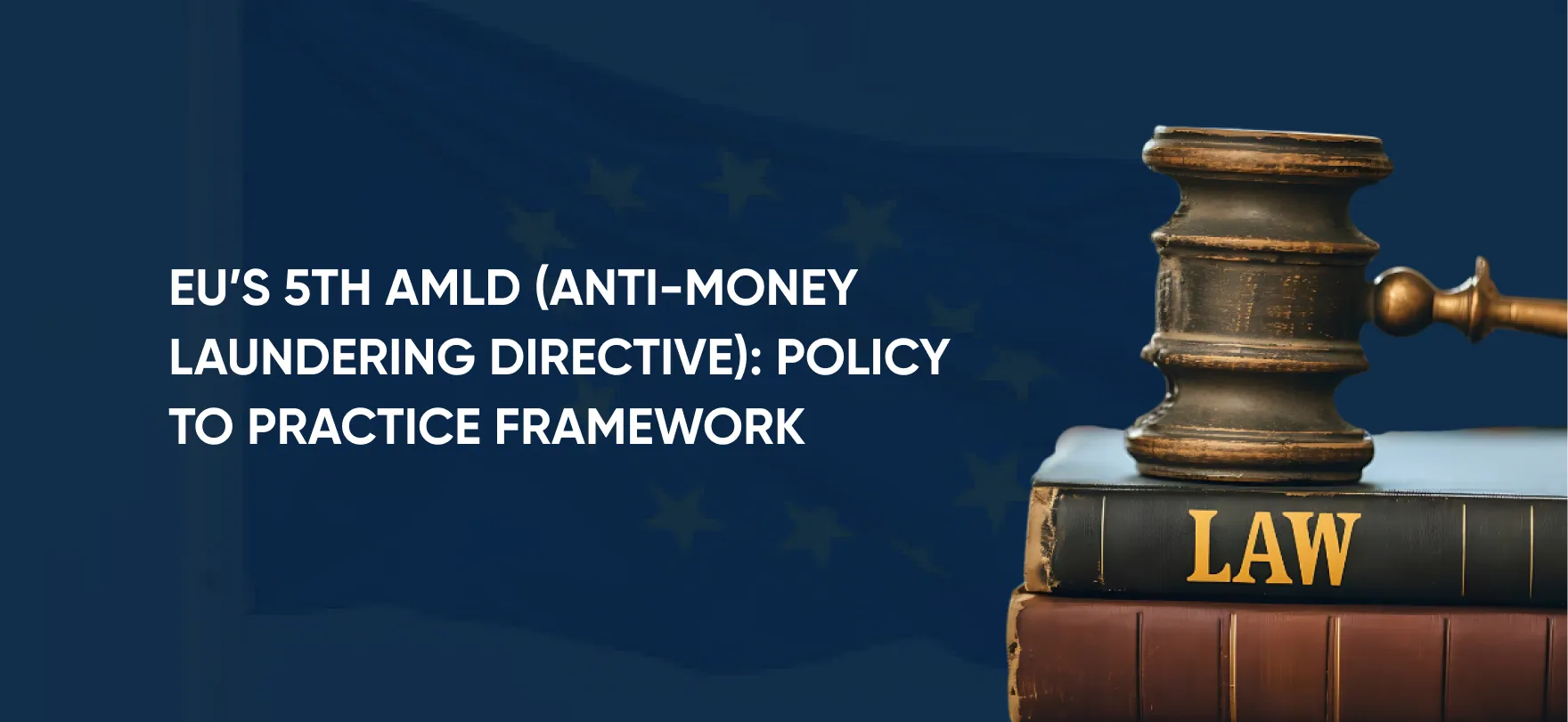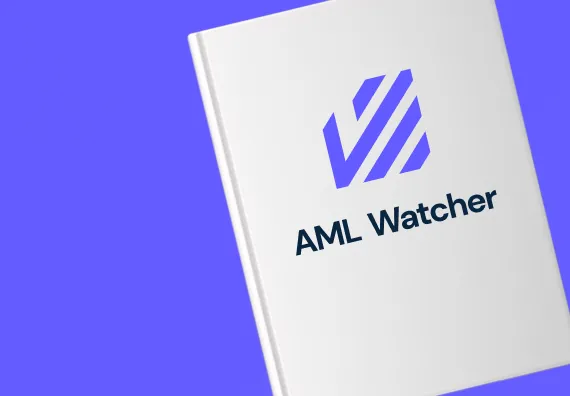
EU’s 5th AMLD (Anti-Money Laundering Directive): Policy to Practice Framework
Since the Middle Ages, Europe has been known for implementing various laws and regulations to combat financial crimes like fraud and corruption.
For instance, Medieval Guild Regulations were passed by the local city councils, native lords and in some cases, by the monarchs to govern the guilds which were basically associations of craftsmen, traders, and merchants in the medieval and early modern period.
Similarly, Lex Mercatoria (Merchant Law), the commercial law used by merchants throughout Europe during the medieval times was aimed at preventing financial crimes.
In the English courts as well as in the U.S, elements and traditions of the Lex Mercatoria were always embedded in the general principles and doctrines of commercial jurisprudence.
Later in 1609, the early Bank of Amsterdam implemented a series of measures to prevent fraudulent activities and maintain transparency.
It laid the foundation and precedent for modern financial regulation by introducing rigorous deposit and accounting practices in an effort to prevent financial crime.
What Really Are the European AML Directives?
In modern times, the European Union released a series of regulations in line with the global AML requirements in order to combat the escalating threat of money laundering and terrorist financing.
These regulations mandated the European financial institutions to follow AML protocols by conducting customer due diligence and reporting suspicious activities to avoid legal consequences of non-compliance and mitigate the risk of money laundering and terrorist financing.
The first AML Directive was passed in 1991 which mandated the firms working in the financial industry to report suspected money laundering.
Whereas the most recent 6th AML Directive was passed in 2021 which increased the severity of punishment for non-compliance.
Implemented on 10th of January 2020, the 5th AML Directive is the extended version of 4th AML Directive that was previously introduced on 20th of May, 2015.
The 5th AML Directive targeted industries and covered the loopholes in the international financial system that were not explicitly addressed in the earlier AML Directives.
What Particular Events Prompt the Release of the 5th AMLD?
Following the principles of evolution, the large scale financial market continues to go through massive changes given the technological revolution, geopolitical terrain, and globalization as well as introduction of new financial products like bank accounts, credit cards, payment services like digital payment wallets in the market.
On the other hand, financial criminals also paced up their criminal methods to bypass the loopholes in the financial system.
Panama Papers Scandal (2016)
Groundbreaking revelations by the Panama Papers scandal (2016) exposed how shell company and offshore accounts were being massively misused to commit several financial crimes to disguise beneficial ownership and their ill-gotten gains. This includes:
- Tax evasion
- Corruption
- Money laundering
- Embezzlement of state funds
- Financing of terrorist operation
To mitigate such risks caused by offshore accounts and extensive use of shell firms by the filthy rich, the 5th AML directive came up with the idea of promoting accessible beneficial ownership registers for corporations and trusts.
The aim is to promote greater transparency in terms of accessible data regarding ultimate beneficial owners.
Luxembourg Leaks (2014)
The 2014 scandal of Luxembourg Leaks is also one of the events whose ripple effect led to the release of the 5th AML Directive.
The scandal involved the astonishing discovery of a tax avoidance scheme that benefitted the multinational firms by setting up secret tax rulings.
Terrorist Attacks in Paris (2015) & Brussels (2016)
Terrorist attacks in Paris (2015) and Brussels (2016) turned out to be a catalyst for many of the stringent regulations introduced in the 5th Anti-Money Laundering Directive.
Here’s how both events turned out to be connected:
New financial tools and new methods of payment, for example, prepaid cards or virtual currencies provided the terrorists much needed anonymity to finance their terrorist operations even in places like Paris and Brussels that were once deemed highly safe.
Therefore, the European Union mandated the virtual currency exchanges and custodian wallet providers to comply with Anti-Money Laundering and Combating the Financing of Terrorism (AML/CFT) regulations as well as get registered with their respective national authorities.
Paradise Papers (2017)
In another instance, the Paradise Papers (2017) revelations led the European Union’s regulatory authorities to expand the anti-money laundering regulations to the free ports and art dealers and mandated to conduct Customer Due Diligence (CDD) for every financial transaction of €10,000 or more.
The aim was to leave no room left for any possible chance of money laundering.
In response to this, the European Union came up with the 5th AML Directive back in April 2018 which came into force on January 10, 2020.
What’s So Unique About the 5th AMLD?
One unique highlight of the 5th AML Directive is its focus on sectors which were previously missed or neglected.
The 5th AML Directive is the outcome of recent the advancement in technology like visual assets and the escalating financial crimes :
- Elimination of the risk of anonymous parties in the payment chain that goes on to finance the terrorist activities and fuel global terrorism.
- Prohibition of the use of prepaid cards issued in Non-EU countries (except in the case the credit cards were issued by a country that has as equitably effective AML regulation as 5AMLD).
- In terms of PEPs, the 5th AML Directive mandated financial institutions to conduct ongoing monitoring of senior foreign political figures and obligated regular updates on any change to their risk levels.
What Key Industries 5th AMLD Targeted?
To close the systemic loopholes, enhance the overall effectiveness of the European Union’s anti money laundering framework, and prevent the use of the financial system for facilitating crimes like money laundering or terrorist financing.
The key sectors targeted by the 5th AML Directive includes cryptocurrency exchanges and wallets, trusts and corporate service providers, prepaid card providers, art dealers and free ports, as well as increased scrutiny of high-value real estate.
For the first time, these sectors were obligated to appoint and train MLRO and design a set of procedures, controls and policies specific to their business operations in line with new regulatory obligations under the 5th antimony laundering directive.
Since the recent events like the Panama Papers and the terrorist attacks in Europe (2015-16) exposed the vulnerability of these sectors, they were required to conduct the risk assessment and complete customer due diligence protocols.
To effectively mitigate the risks of terrorist financing via cryptocurrency exchanges, the screening of both sender as well as the beneficiary was also mandated.
Moreover, these new sectors were also mandated to organize training of their staff members and senior executives were obligated to actively engage in AML procedures.
What Are Some Additional Specifications of 5th AML Directive?
Additional requirements mentioned in the 5th AML Directive include the following:
- Establishment of Central Register of Beneficial Owner Information
- CDD For Payment Cards
- Intelligence Collaboration Between FIUs
- Use of Electronic Identity Verification (EIV) during Customer Due Diligence during onboarding a potential customer.
- Enhanced Due Diligence (EDD) became mandatory when dealing with customers from a high-risk country.
- This directive gave FIUs the authority to access confidential information about suspicious activity even if Suspicious Activity Report has not been filed by a firm.
Establishment of Central Register of Beneficial Owner Information
The 4th Anti-Money Laundering Directive mandated the European Union’s member states to establish a central register comprising all the data necessary to identify beneficial owners and made this information easily accessible to the general public.
In 2016, following the 4MLD requirement, the regulatory authorities in the United Kingdom established the Persons of Significant Control Register.
The 5th Anti-Money Laundering Directive updated the loophole in terms of beneficial owner information to early report any inconsistency found during due diligence.
Intelligence Collaboration Between FIUs
The 5th Anti-Money Laundering Directive gave unique authority to the Financial Intelligence Units information regarding suspicious clients even if a Suspicious Activity Report has not been filed.
In order to enhance the detection rates, iIt also mandated the establishment of electronic data retrieval systems, payment transaction registers and set up of central bank accounts for swift access of confidential information by FIUs.
CDD For Payment Cards
After the revelation that prepaid cards are the preferred method by the financial criminals and terrorists.
Customer due diligence of identifying holders of prepaid cards who make any remote payment transactions over €50 or they have a minimum threshold of €150 or more, is now mandatory.
The 5th Anti-Money Laundering Directive has now mandated recalibration of payment systems and operational assessment.
What Does The Future Hold?
The 5th AML Directive was introduced in consideration of escalating terrorist events, money laundering attempts. Later, the introduction of 6AMLD which came into force on December 3, 2020 further filled the loopholes and brought in amendments in line with the evolving financial crimes landscape.
In future, we can expect further advancements in regulatory frameworks, driven by technological innovation and increasing global cooperation.
We are here to consult you
Switch to AML Watcher today and reduce your current AML cost by 50% - no questions asked.
- Find right product and pricing for your business
- Get your current solution provider audit & minimise your changeover risk
- Gain expert insights with quick response time to your queries





